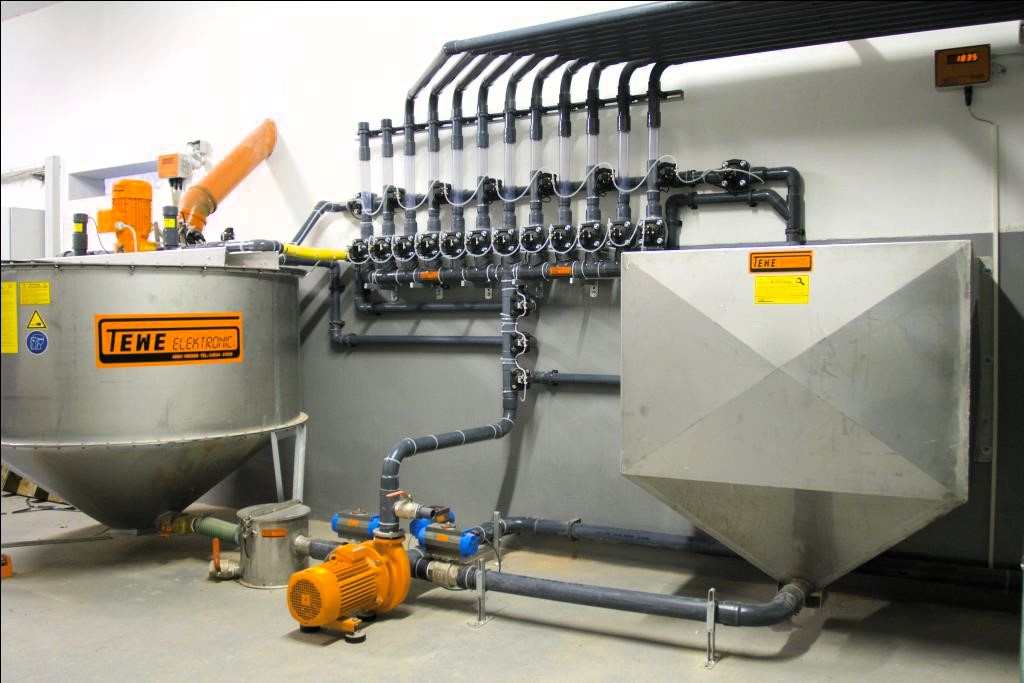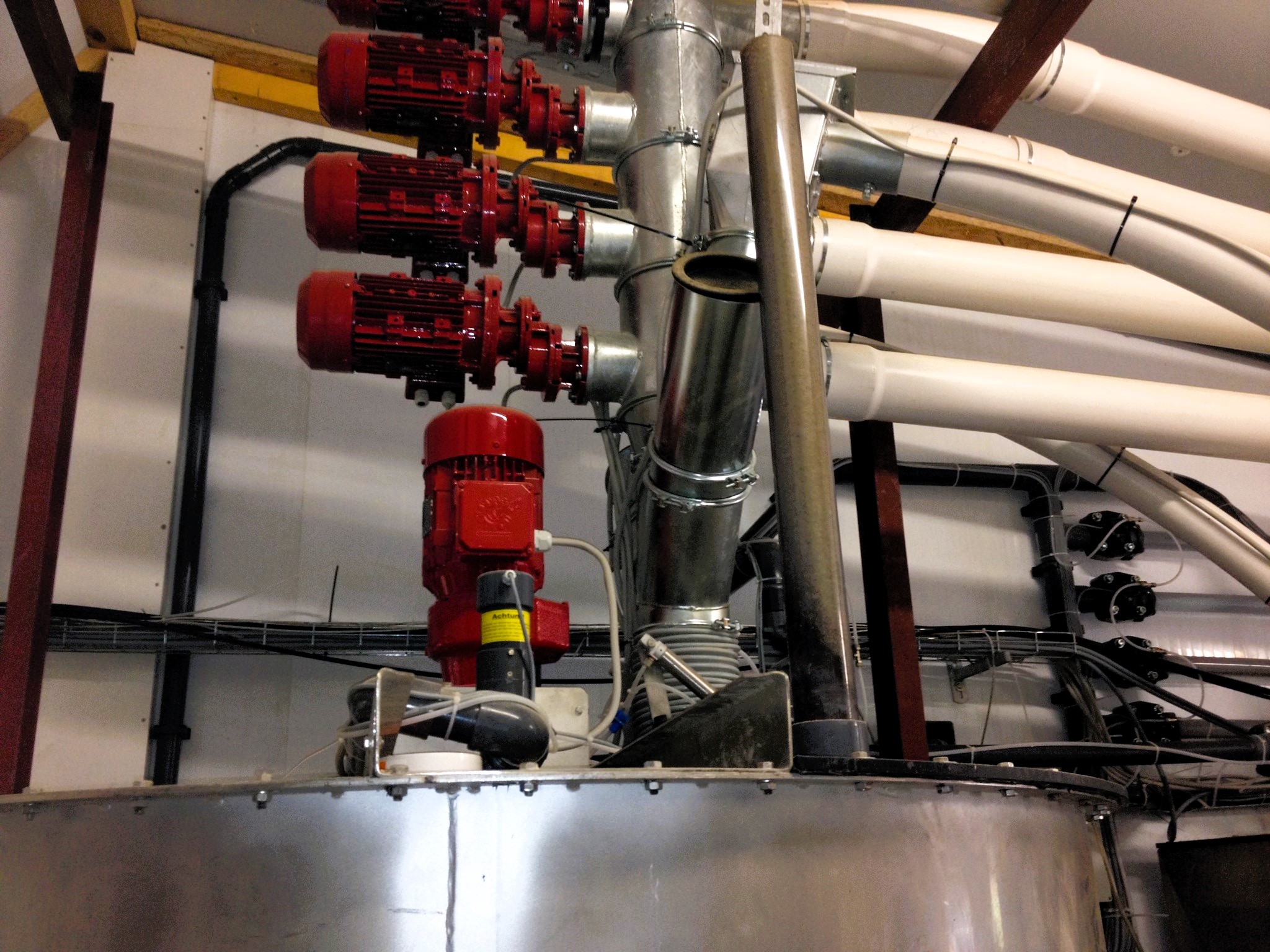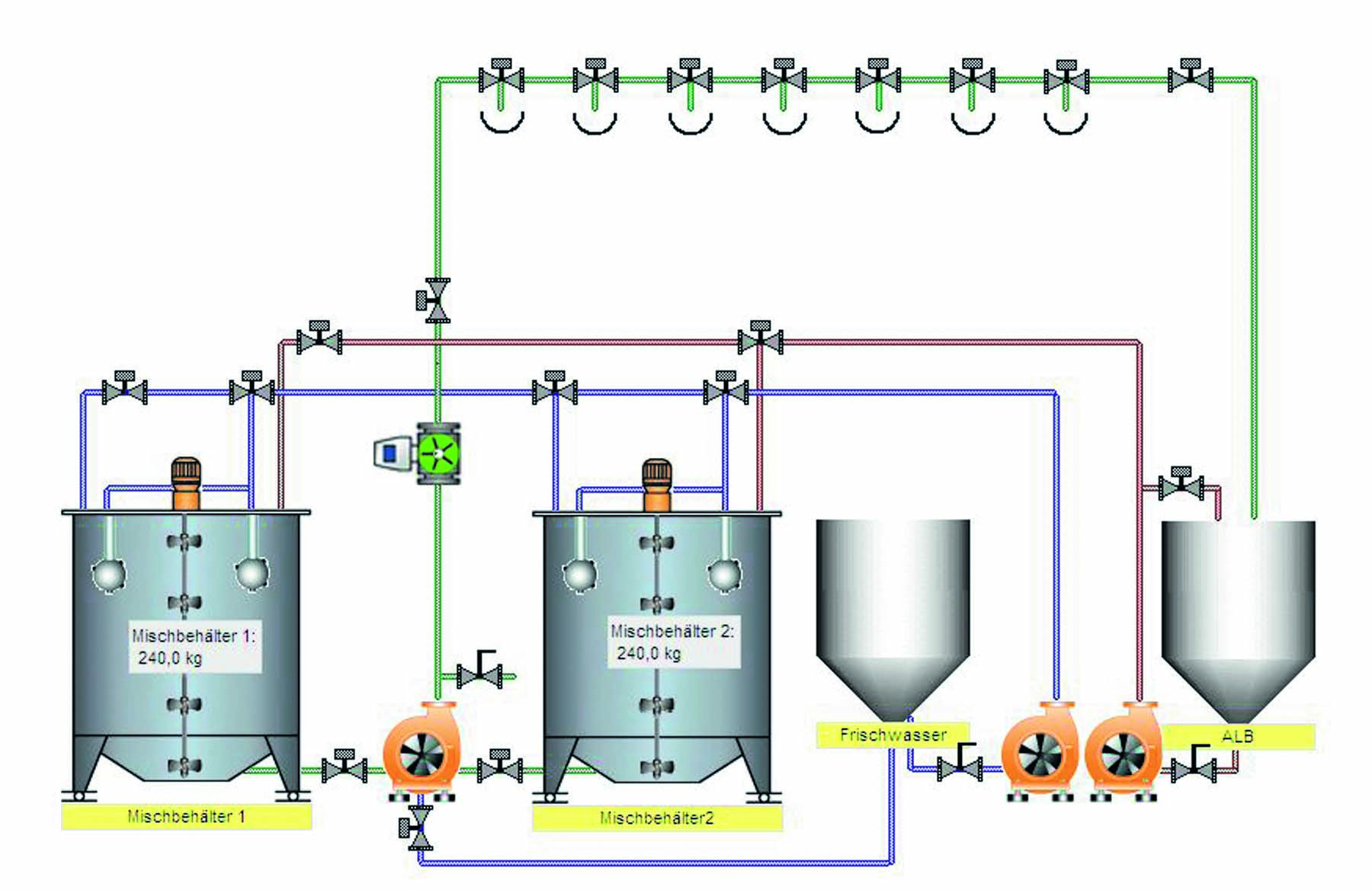Liquid sensor feeding
Optimal ratio of feed input to weight output
Sensor-controlled liquid feeding is used on many farms, especially for fattening pigs. Here, the animals practically control their own feed allocation according to their own needs using the feeding computer’s control electronics. The animals are provided with liquid feed ad libitum by means of a sensor which detects the fill level of the trough and/or the time left until the trough will be empty. When the sensor detects that the trough is empty, the animals receive fresh feed either immediately or at the nect feeding time. TEWE’s self-developed control technology brings together all essential data in the feeding system and controls everything independently in line with the specifications.
The animals receive optimal nutrition in the fattening stage with nothing going to waste. This maximises weight gain in a healthy manner. Other smart options on this TEWE system such as variation of feed composition, a range of feed curves and optimal hygiene standards ensure perfect results.
What sets this feeding method apart from others is the animal-to-feeding-station ratio. In trough feeding without a sensor, all animals generally have to eat at the same time if possible: the animal-to-feeding-station ratio is 1:1.
With liquid sensor feeding, an animal-to-feeding-station ratio of 4:1 is usually achievable. On top of that, the feed is always fresh and dispensed into the trough in small quantities. There is also the option to document feeding speed. The dispensed amount is transmitted to the PC via the control and can be evaluated from anywhere via remote access.
In conclusion
Sensor-controlled liquid feeding offers the best ratio of feed input to weight output, and is particularly suited to fattening pig farming. With needs-based feeding, the animals control their own feed intake, which results in an optimal supply of nutrition with nothing going to waste. TEWE’s intelligent control technology continuously monitors the fill level and feeding speed to ensure that the animals are always receiving small quantities of fresh feed. This minimises feed costs and improves the health and weight gain of the animals.

Benefits
- Precise, needs-based feeding: Sensor-controlled liquid feeding enables more precise, needs-based feeding of the animals, helping to optimise their health and development.
- Increase efficiency and save resources: Precise dosing and monitoring of feed consumption ensure that resources are used efficiently and reduce costs.
- Health monitoring and rapid response: Continuous monitoring of health parameters enables early detection of diseases or other issues, which in turn enables fast, targeted interventions.
- Better animal welfare and healthier husbandry: Tailoring the feed to the animals’ needs contributes to increased animal welfare and healthier husbandry, which has a positive effect on the animals’ performance and wellbeing.
- Combinable with tried-and-tested TEWE systems: The advantages of liquid sensor feeding can be seamlessly combined with the proven benefits of all TEWE systems, such as powerful, durable and long-lasting technology, and innovative feeding computers with all modern program and automation options.
Features
Precise feed dosing:
Feeding is carried out with maximum precision by continuously monitoring and controlling the fill level in the feed trough. This makes it possible to adjust the feed supply in line with the animals’ needs and precisely dose it according to their weight and state of health.
Health monitoring:
The sensors continuously record health parameters and enable a rapid response in the event of deviations from the normal state. This means that any additives required to boost or maintain the animals’ health can be administered without delay to ensure their wellbeing.
Increase efficiency and save resources:
Sensor feeding optimises feed consumption, reduces waste, and enables more efficient use of resources. This leads to a reduction in costs and more sustainable farming.
Individualised feeding:
Each group of animals receives a customised feed ration that meets their individual needs. This contributes to better animal welfare, healthier husbandry and optimal development of the animals.
References




